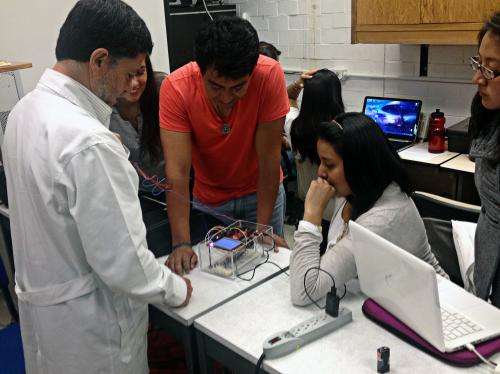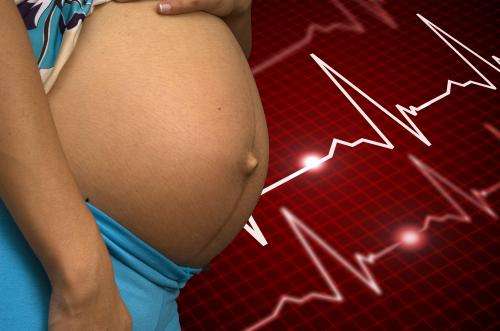A group of students from the Autonomous Metropolitan University of Mexico (UAM-I) developed a technological portable prototype able to diagnose health conditions in the mother and in the baby by monitoring electrical activity of both hearts.
The team showed that mobile technology placed in the womb (performing an abdominal electrocardiogram), differs from traditional electrocardiograms since it detects the electrical activity emitted by both the mother's heart and the unborn child's. In other technologies, which often have complications, both signals are mixed, thus hindering an accurate diagnosis of the cardiac activity of both.
"The applications of our portable system allow a very precise interpretation separating the two components: maternal diagnosis and monitoring in one side and fetal on the other," said Ramon Gonzalez Camarena, project tutor. The researcher explained that certain morphologies, ie, functions of the cardiovascular system, suggest how the heart of both the mother and the unborn child evolve.
The mobile device is mainly based on the detection of arrhythmias in the heart of the unborn child, although there is a spectrum of diseases associated with abnormalities in the heart's rhythm. However, González Camarena said that it is still necessary to subject the prototype to various biological and safety tests.
The prototype is the result of teamwork between students Dara Nimsi Chávez, Diana Selene Navarro, Tania Guevara Pintado, Laura Anayeli Perez, Orlando Martin Luna, Ricardo Abel Davalos, Angel Damian Gaytan and Enrique Gerardo Zubirán, Biomedical Engineering students who came together to work in a call for Texas Instruments.
"Texas Instruments provided many of the circuits that are included in our device. Development took six months. We intend to further miniaturize the instrument until it is about the size of a cell phone, so that it can be easily placed on the abdomen of the mother," said Gonzalez Camarena.
The researcher and the group of students under his mentorship said that, so far, the prototype has to go through several security tests. However, its use for short-term medical validations has not been ruled out because the technology has had excellent performance.
Provided by Investigación y Desarrollo























